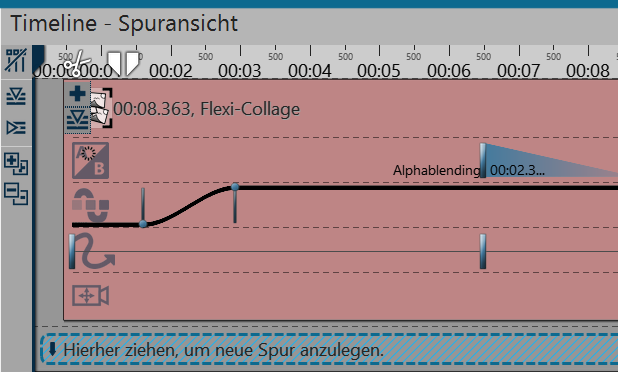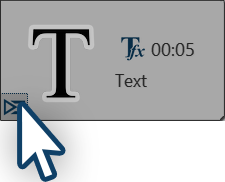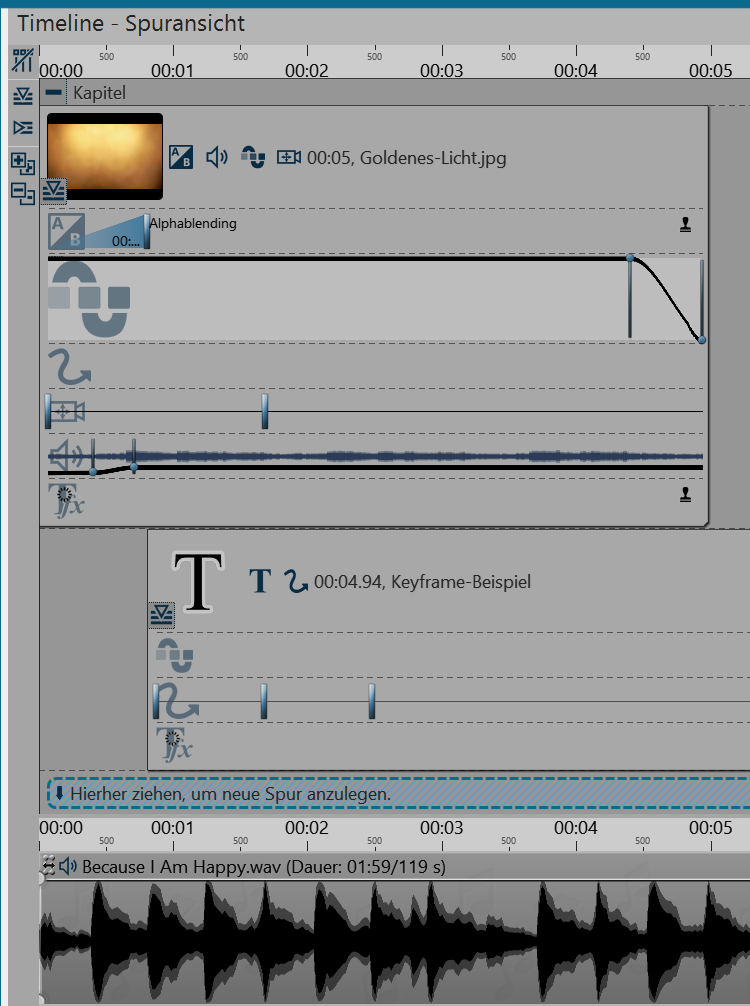|
<< Click to Display Table of Contents >> Working with key frames |
  
|
|
<< Click to Display Table of Contents >> Working with key frames |
  
|
 For each animation the object contains multiple keyframe tracks In Stages you can control, among other things, transparency, fading in and out, screen panning, the motion path and the text display in the Timeline, over Key frames. |
On the left side of the Timeline there are five small buttons which help you work with the Tracks and the Key frames. Using this you can open and close all the Tracks all at once, as well as getting all the Key frame Tracks to fade in or out.
|
Remove all Timeline Markers |
|
Open all Key frame Tracks |
|
Close all Key frame Tracks |
|
Open all Containers |
|
Close all Containers |
 Open Keyframe Tracks for Text Object The symbols to open and close the Key frame Track can also be found on the individual Objects. |
 Opened Keyframe Tracks First of all open the Key frame Tracks of the Object. Depending on the type of Object, there are differing Key frame Tracks available. You can see which Effect or which Property can be set for each Track thanks to the symbols at the beginning of each Key frame Track. If you wish to edit the Key frames in a particular track, first click on the relevant Track. This is then highlighted by a slight enlargement. Then click anywhere within this Track to create a Key frame. This Key frame can create a new Motion Marker in the Track for the pan shot whose Properties you can, for example, set precisely in the Layout designer. A Key frame in the Track for Transparency creates a new point in the Transparency Curve. You see this curve with your ups and downs directly in the Key frame Track. |
When you have opened the Key frame Tracks you will see an individual symbol at the beginning of each Track. The symbol indicates the Effect you influence with each Key frame Track.
|
Duration and type of fading in or out |
|
Duration and modulation of opacity (transparency curve) |
|
Time interval between the markers on a motion path. |
|
Time interval between the markers of a pan shot |
|
Chronological sequence of volume change |
|
Duration and type of text effect |